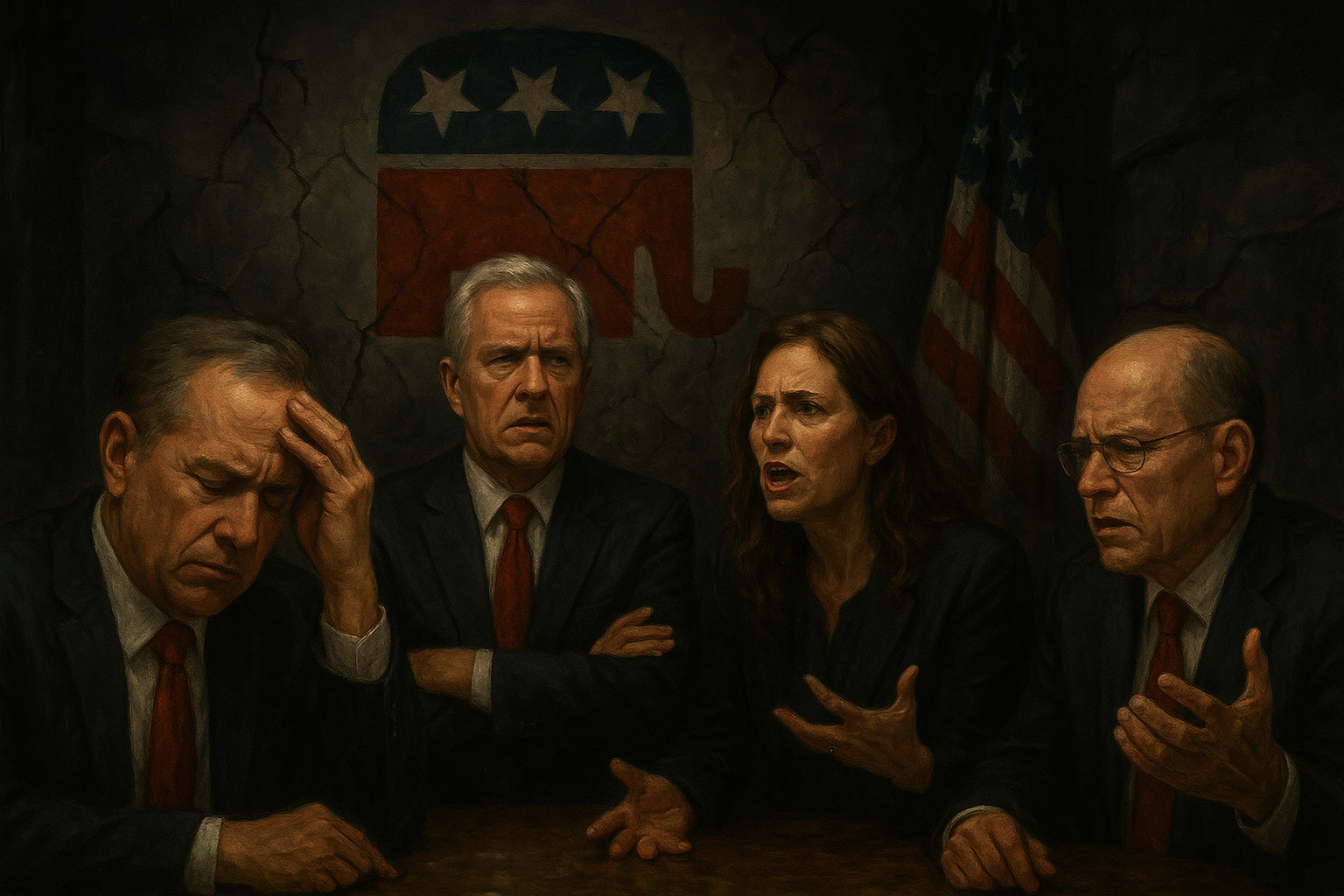The Republican Squirm: Navigating Internal Turmoil
The Republican Party, once a monolithic entity, now faces a labyrinth of internal discord that has become increasingly evident and complex. This article delves into the varying factions within the party, the ideological clashes at play, and the ongoing challenges posed by both grassroots movements and traditional party leadership.
Historical Context
To understand the current state of the Republican Party, it’s important to recognize its historical evolution. Established in 1854, the party has undergone significant transformations, adapting to societal changes and electoral dynamics. The Reagan era marked a pivotal point—ushering in a conservative agenda that established fiscal conservatism, a strong national defense, and cultural conservatism as core principles.
However, the party’s current struggles can be traced back to the rise of populism, particularly exemplified by the candidacy and presidency of Donald Trump. This marked a shift from traditional conservative values to a more populist, nationalistic approach. Trump’s influence has left a lasting schism within the party that continues to shape its future.
Factionalization within the Party
The Republican Party today is characterized by several distinct factions, each vying for influence and control. The primary groups include:
-
Establishment Republicans: This faction comprises traditional conservatives who advocate for free markets, limited government, and strong international alliances. They tend to oppose the more radical elements of the party and favor a return to conservative orthodoxy.
-
Populist Nationalists: Energized by Trump’s presidency, this group prioritizes America-first policies, immigration restrictions, and trade protectionism. Their agenda resonates with disillusioned voters and those feeling left behind by globalization, challenging the establishment’s preferred internationalism.
-
Libertarians: Advocating for personal freedoms and minimal government intervention, libertarian-leaning Republicans often clash with both establishment and populist factions on issues like surveillance, drug legalization, and foreign policy.
-
Social Conservatives: This faction focuses on traditional family values and often champions issues like opposition to abortion and same-sex marriage. While their influence has waned since the height of the culture wars, they still represent a significant voting bloc.
- Moderates: Often found in swing states, moderate Republicans focus on bipartisan cooperation and pragmatic policies. They are concerned about issues like climate change and health care, advocating for positions that do not alienate moderate Democrats.
The Impact of Trumpism
Trump’s presidency has exacerbated divisions, as he transformed the Republican Party’s approach to politics. By emphasizing loyalty and personal allegiance, he weakened ties to established norms and institutions. The narrative built around election integrity, particularly regarding the 2020 election results, continues to polarize the party.
The “Big Lie” surrounding voter fraud has fueled discontent and distrust among Republican voters towards their own party’s establishment. This shift challenges party leadership to balance populist sentiments with electoral viability, a precarious tightrope walk that has led to significant internal strife.
Grassroots Movements and Activism
Rising grassroots movements like the Tea Party and newer organizations have also played a critical role in reshaping the Republican landscape. These movements often prioritize issues such as fiscal conservatism, limited government, and traditional values, while often opposing establishment figures.
The rise of online activism and social media has empowered local groups, creating a louder voice for grassroots conservatives dissatisfied with top-down directives. This has contributed to primaries where establishment candidates are often unseated by more radical newcomers, further fracturing party unity.
Challenges in Leadership
The current leadership faces the daunting task of reconciling these diverse factions. Leaders like Kevin McCarthy, the House Minority Leader, have attempted to navigate these complexities without alienating any major groups. However, compromises are met with resistance, leading to a perception of weakness among party loyalists.
Finding a cohesive path forward has proven utterly challenging. The inability to present a unified front on critical issues such as health care, immigration, and fiscal policy has resulted in legislative gridlock and public disenchantment.
Election Dynamics
As the 2024 elections loom, the internal turmoil within the GOP raises questions about its viability as a major political force. The party’s primary season is expected to be contentious, with candidates needing to cater to base sentiments without losing the moderate vote essential for a general election victory.
Additionally, external factors such as candidate appeal, national mood, and key issues—including inflation, public safety, and foreign affairs—will play significant roles in shaping the electoral strategy.
Media Influence and Public Perception
Media portrayal of the Republican Party, framed by its internal factions, has further complicated its navigation through this tumultuous landscape. Coverage often highlights conflict, contributing to public perception that the party lacks coherence and unity.
Furthermore, the emergence of alternative media outlets has given voice to conflicting narratives within the party, often amplifying divisions rather than fostering dialogue. This bifurcation in media narratives complicates the party’s ability to effectively communicate its messages and unite its voter base.
Future Projections
The future of the Republican Party hinges on its ability to reconcile its internal divisions while appealing to a broader electorate. As the dynamics evolve, the party must address crucial questions: Can they redefine their identity in a way that embraces both populist energy and traditional conservatism? Will they be willing to reach compromises that alienate small segments of their base for the greater electoral good?
Ultimately, the response to these questions will determine the party’s relevance in American politics in the years to come. Striving for a cohesive vision that honors the diverse aspirations of its members while maintaining electoral competitiveness remains a formidable challenge.
The Republican squirm symbolizes not just a party in turmoil but a pivotal moment in American political history, with ramifications that could influence the political landscape for decades ahead. Navigating this internal turbulence will require astute leadership, thoughtful dialogue, and a recognition of the changing tide of American values and priorities.



